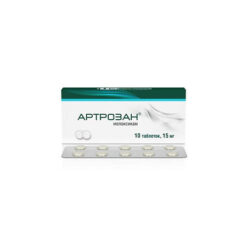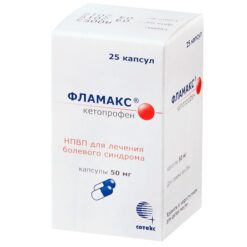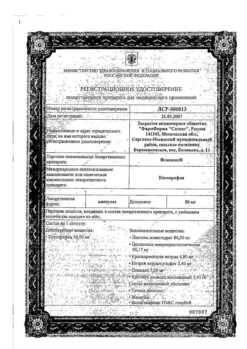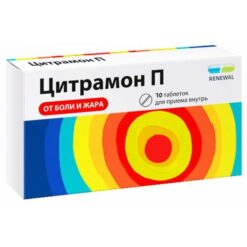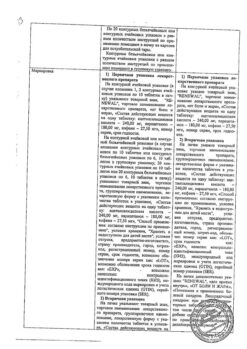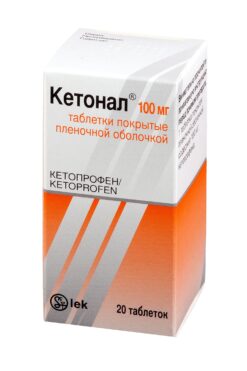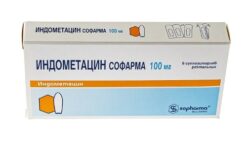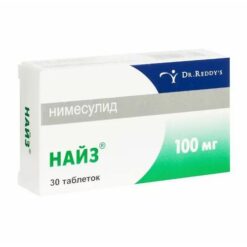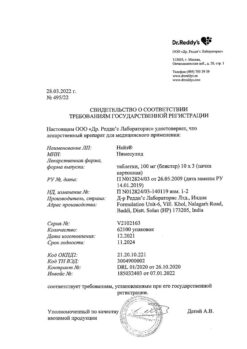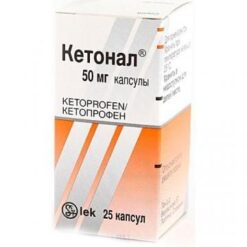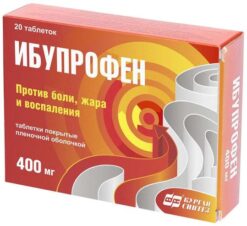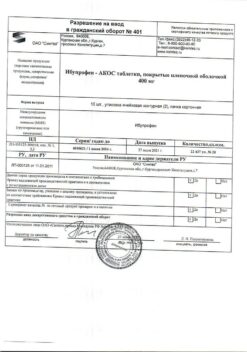No products in the cart.
Arthrosan, tablets 7.5 mg 20 pcs
€1.00
Out of stock
(E-mail when Stock is available)
Description
Pharmgroup: NSAIDs.
Pharmacological action: Meloxicam is a non-steroidal anti-inflammatory drug (NSAID) with anti-inflammatory, antipyretic and analgesic effect. The mechanism of action is related to inhibition of prostaglandin synthesis as a result of selective inhibition of enzymatic activity of cyclooxygenase of the second type (COX-2), which participates in biosynthesis of prostaglandins in inflammatory areas. When prescribed in high doses, prolonged use and individual characteristics of the body, selectivity against COX-2 is reduced. To a lesser extent, it acts on cyclooxygenase type 1 (COX-1), which is involved in the synthesis of prostaglandins that protect the mucosa of the gastrointestinal tract (GIT) and are involved in the regulation of blood flow in the kidneys. Due to the above selectivity of COX-2 activity inhibition, the drug causes less frequently erosive and ulcerative lesions of the gastrointestinal tract.
Pharmacokinetics: Binding to plasma proteins is 99%. The drug penetrates through histohematic barriers, its concentration in synovial fluid is 50% of the maximum concentration in plasma. The main metabolite, 5′-carboxymeloxicam (60% of the dose amount), is formed by oxidation of the intermediate metabolite, 5′-hydroxymethylmeloxicam, which is also excreted, but to a lesser extent (9% of the dose amount). In vitro studies have shown that CYP2C9 isoenzyme plays an important role in this metabolic transformation, CYP3A4 isoenzyme has additional importance. Peroxidase takes part in formation of two other metabolites, which are 16% and 4% of the drug dose, respectively.
Plasma clearance is on the average 8 ml/min. In elderly persons clearance of the drug decreases. Distribution volume is low and averages 11 liters. Hepatic or renal insufficiency of moderate severity has no significant effect on the pharmacokinetics of meloxicam.
It is excreted in equal proportions in the feces and urine, mainly as metabolites. Less than 5% of the daily dose is excreted unchanged in the intestine, the drug is detected only in trace amounts in the urine.
Indications
Indications
Symptomatic treatment of osteoarthritis, rheumatoid arthritis, ankylosing spondylitis (Bechterew’s disease), osteochondrosis and other inflammatory and degenerative diseases of the musculo-articular system, accompanied by pain syndrome.
Active ingredient
Active ingredient
Composition
Composition
One tablet of Artrozan contains meloxicam 7.5 mg.
excipients: potato starch, lactose monohydrate, povidone, trisodium citrate, magnesium stearate, colloidal silicon dioxide.
How to take, the dosage
How to take, the dosage
The drug is taken orally with meals in a daily dose of 7.5-15 mg.
The recommended dosing regimen:
Rheumatoid arthritis: 15 mg daily. If necessary, the dose can be reduced to 7.5 mg per day.
Osteoarthritis, osteochondrosis and other inflammatory and degenerative diseases of the musculo-articular system accompanied by pain syndrome: 7.5 mg per day. If ineffective, the dose can be increased to 15 mg per day.
Ankylosing spondylitis: 15 mg daily. The maximum daily dose should not exceed 15 mg.
In patients at increased risk of side effects, and in patients with significant renal impairment who are on hemodialysis: the dose should not exceed 7.5 mg daily.
Interaction
Interaction
Concomitant use with other nonsteroidal anti-inflammatory drugs (including acetylsalicylic acid) increases the risk of erosive ulcerative lesions and bleeding of the gastrointestinal tract;.
Concomitant use with hypotensive drugs may decrease the effectiveness of the latter.
Simultaneous use with lithium preparations may lead to cumulation of lithium and increase its toxic effects (we recommend monitoring the lithium concentration in the blood).
In concomitant use with methotrexate there is an increased side effect of the latter on the hematopoietic system (risk of anemia and leukopenia; periodic control of total blood count is indicated).
Concomitant use with diuretics and cyclosporine increases the risk of renal failure.
Concomitant use with intrauterine contraceptives may decrease the effectiveness of the latter.
Concomitant use with anticoagulants (heparin, warfarin), thrombolytic drugs (streptokinase, fibrinolysin), and antiaggregants (ticlopidine, clopidogrel, acetylsalicylic acid) increases the risk of bleeding (periodic monitoring of blood clotting is necessary).
Concomitant use with colestiramine accelerates excretion of meloxicam through the gastrointestinal tract.
Concomitant use with selective serotonin reuptake inhibitors increases the risk of gastrointestinal bleeding.
Special Instructions
Special Instructions
Caution should be exercised when using the drug in patients with a history of peptic ulcer and duodenal ulcer, and in patients on anticoagulant therapy. These patients have an increased risk of gastrointestinal erosive ulcers.
We should exercise caution and monitor daily urine output and renal function when using the drug in elderly patients and patients with decreased RBC and decreased glomerular filtration (dehydration, chronic heart failure, liver cirrhosis, nephrotic syndrome, clinically manifested renal disease, use of diuretics, dehydration after major surgery).
In patients with mild to moderate renal function impairment (creatinine clearance 30-60 ml/min), no dose adjustment is required.
Patients taking diuretics and meloxicam concomitantly should take sufficient fluids.
In case of allergic reactions (itching, skin rash, urticaria, photosensitization) during treatment it is necessary to consult a physician in order to decide on stopping the drug.
Meloxicam, like other NSAIDs, may mask the symptoms of infectious diseases.
The use of meloxicam, as well as other drugs that block the synthesis of prostaglandins, may affect fertility, so it is not recommended for women who plan to become pregnant.
Impact on driving and operating machinery
The use of the drug may cause headache, dizziness and somnolence. If these phenomena occur, refrain from driving and performing other potentially dangerous activities requiring increased concentration and quick psychomotor reactions.
Contraindications
Contraindications
With caution: the drug should be used with caution in elderly patients and in the presence of the following conditions in the history: CHD, congestive heart failure, cerebrovascular disease, dyslipidemia/hyperlipidemia, diabetes mellitus, peripheral vascular disease, CPN with creatinine clearance 30-60 ml/min; gastrointestinal ulcers, presence of Helicobacter pylori infection. Prolonged use of NSAIDs, alcohol abuse, concomitant therapy with anticoagulants (e.g., warfarin), antiaggregants (e.g., acetylsalicylic acid, clopidogrel), oral glucocorticosteroids (e.g, Prednisolone), selective serotonin reuptake inhibitors (e.g., citalopram, fluoxetine, sertraline, paroxetine) should always be considered when prescribing meloxicam.
In order to reduce the risk of gastrointestinal adverse events, the lowest effective dose should be used for as short a course as possible.
Side effects
Side effects
Digestive system disorders: more than 1% – dyspepsia, including. nausea, vomiting, abdominal pain, diarrhea, constipation, flatulence; 0.1-1% – transient increase of “liver” transaminases activity, hyperbilirubinemia, belching, esophagitis, stomach or duodenal ulcer, gastrointestinal bleeding (hidden or evident), stomatitis; less than 0.1% – perforation of gastrointestinal organs, colitis, hepatitis, gastritis.
Hematopoietic organs: more than 1% – anemia; 0.1-1% – leukopenia, thrombocytopenia.
The skin: more than 1% – itching, skin rash; 0,1-1% – urticaria; less than 0,1% – photosensitization, bullous rash, erythema multiforme, including Stevens-Johnson syndrome, toxic epidermal necrolysis.
Respiratory system disorders: less than 0.1% – bronchospasm.
CNS disorders: more than 1% – dizziness, headache; 0.1-1% – tinnitus, drowsiness; less than 0.1% – emotional lability, confusion, disorientation.
Systems: more than 1% – peripheral edema; 0.1-1% – increase in blood pressure, palpitations, facial hyperemia.
Urinary system disorders: 0.1-1% – hypercreatininemia, increased serum urea concentration; less than 0.1% – acute renal failure; no association with meloxicam administration – interstitial nephritis, albuminuria, hematuria.
Sensory system disorders: less than 0.1% – conjunctivitis, blurred vision.
Allergic reactions: less than 0.1% – angioedema, anaphylactic, anaphylactoid reactions.
Overdose
Overdose
Symptoms: impaired consciousness, nausea, vomiting, epigastric pain, GI bleeding, acute renal failure, liver failure, respiratory arrest, asystole.
Treatment: there are no specific antidotes and antagonists. In case of overdose of the drug – gastric lavage, administration of activated charcoal (within the next hour), symptomatic therapy. Forced diuresis, urine alkalinization, hemodialysis are ineffective because of the high binding of the drug with blood proteins.
Pregnancy use
Pregnancy use
It is contraindicated in pregnancy and lactation.
Similarities
Similarities
Additional information
| Shelf life | 2 years |
|---|---|
| Conditions of storage | In a dry, light-protected place |
| Manufacturer | Pharmstandard-Leksredstva, Russia |
| Medication form | pills |
| Brand | Pharmstandard-Leksredstva |
Other forms…
Related products
Buy Arthrosan, tablets 7.5 mg 20 pcs with delivery to USA, UK, Europe and over 120 other countries.



